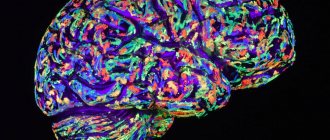Personal self-esteem, being a component of self-awareness, includes an assessment of moral qualities, human and physical characteristics, actions, and abilities. A person’s self-esteem represents the central formation of the individual, and also demonstrates the social adaptation of the individual, acting as a regulator of his behavior and activities. Self-esteem is associated with self-esteem. Self-respecting individuals have an independent line of behavior, are more balanced and not aggressive. In the usual understanding for a person, self-esteem is an assessment of one’s personality.
Formation of personal self-esteem
Personal self-esteem develops in the process of activity, as well as interpersonal interaction. How a person evaluates himself largely depends on society. An important role in the formation of a person’s self-esteem is played by the assessments of people around him, as well as the personal achievements of the individual.
In psychology, self-esteem is understood as an individual’s idea of the significance of his personal activities among other individuals, as well as evaluation of himself and personal qualities, feelings, advantages, disadvantages, expressing them closed or open.
Self-esteem of a person is considered to be the stable psychological characteristics of a person. It is very difficult to change, since it is formed in early childhood and depends not only on congenital factors, but also on circumstances in life. It is significantly influenced by the attitude of others, since self-esteem is formed as a result of continuous comparison of oneself with other people. To overcome yourself, you should take a sober and courageous look inside yourself, study your temperament, character, and other psychological properties necessary in interpersonal interaction.
Study of personality self-esteem
A study of personality self-esteem by psychologists revealed that it performs three functions:
- regulatory, solving problems of personal choice,
- protective, ensuring relative stability, as well as independence of the individual,
- developing, acting as an impetus for personal development.
Psychologists advise every person to look within themselves, since solutions to many current problems are found within. By delving into oneself, a person is able to get rid of the garbage found there, as happens when cleaning an apartment on New Year’s Eve. At the same time, useful, necessary things are placed closer, and what is not needed is hidden further away.
Personal self-esteem forms a person’s self-awareness. A person, evaluating himself, includes in this process an assessment of his qualities, properties and capabilities. This occurs through introspection, introspection, self-report, continuous comparison of oneself with other individuals with whom a person is in direct contact.
Self-assessment is not simply the satisfaction of curiosity. The driving motive is the motive of self-improvement, the desire for success, a healthy sense of pride, because human life is a protracted struggle with oneself.
Personal self-assessment makes it possible to both see the present “I” and link it with your future and past. Personal self-esteem allows an individual to see the roots of his strengths and weaknesses, become confident in their objectivity and learn to acquire adequate models for his behavior in everyday situations. A person who has come to know himself turns into a different person.
Personal self-esteem in its structure has two components: cognitive and emotional.
Cognitive reflects everything that a person has learned about himself from various sources of information.
Emotional expresses one’s own attitude towards different aspects of the personality (behavior, character traits, habits).
Categories
Characteristics of personality orientation and its components.
Personality orientation is a system of dominant motives that perform the function of motivating activity and forming meaning. The orientation of a person is what is internally, truly dear to a person, what he really strives for. The main characteristics of a person’s focus are the breadth or narrowness of the focus, the stability and effectiveness of the focus, the level and guidelines of the focus (focus on oneself, on communication and relationships, on business). An integral characteristic of personality orientation is the ability of a person to determine his own goals and values, to be not only an organism, but to be a person. Forms of personality orientation Personality orientation is always socially conditioned and formed in the process of education. The orientation is greatly influenced by attitudes that have become personality traits and manifest themselves in such forms
Direction is the most important property of a person, which expresses the dynamics of human development as a social and spiritual being, the main tendencies of his behavior. It is in this property that the goals in the name of which a person acts, his motives, his subjective relationships to various aspects of reality are expressed. Orientation has an organizing influence not only on the components of the personality structure (for example, on the manifestation of temperament or on the development of abilities), but also on mental states (for example, overcoming stress) and the entire area of mental processes. Orientation is embodied in various forms - value orientations, likes or dislikes, tastes, inclinations, attachments and manifests itself in various spheres of human life: professional, family, political, etc. It is in the direction that the goals in the name of which a person acts, his motives, his subjective relationships to various aspects of reality are expressed, i.e. the whole system of characteristics. Direction sets the main tendencies of behavior. A person with a pronounced positive orientation is hardworking, purposeful, and highly socially active.
No. “I”-concept (“I”-image, English) is an individual’s system of ideas about himself, a conscious, reflective part of the personality. These ideas about oneself are more or less conscious and have relative stability. The self-concept (or self-image) is a relatively stable, more or less conscious and recorded in verbal form, a person’s idea of himself. This concept is the result of knowing and evaluating oneself through individual images of oneself in a wide variety of real and fantastic situations, as well as through the opinions of other people and correlating oneself with others. The self-concept is characterized, among other things, by adequacy or inadequacy: a person can create such an image of oneself (and to believe in it), which does not correspond to reality and leads to conflicts with it; on the contrary, an adequate self-concept contributes to more successful adaptation to the world and other people. The term “I-concept” appeared in scientific language at the turn of the 19th and 20th centuries in connection with ideas about the nature of man as a cognizing subject and a cognizable object. The term is often used as a synonym for “self-consciousness,” but in contrast to the latter “„ The “I”-concept is less neutral, including the evaluative aspect of self-awareness. The “I”-concept, in essence, determines not just what an individual is, but also what he thinks about himself, how he looks at his active beginning and future development opportunities.
Personal self-esteem is part of those processes that form a person’s self-awareness. With self-esteem, a person tries to evaluate his qualities, properties and capabilities. This is done through introspection, introspection, self-report, and also through continuous comparison of oneself with other people with whom a person has to be in direct contact. The driving motive for self-esteem is the motive of self-improvement, a healthy sense of self-esteem and the desire for success. Self-esteem not only makes it possible to see the present “I”, but also to link it with your past and future. After all, on the one hand, the formation of self-esteem takes place in the early years. On the other hand, self-esteem belongs to the most stable personality characteristics. Therefore, it allows a person to consider the roots of his weaknesses and strengths, make sure of their objectivity and find more adequate models of his behavior in various everyday situations.
Self-awareness is primarily the process by which a person knows and relates to himself, but it is also characterized by its product - the “self-concept”. “I-concept” is quite stable, experienced as a unique system of a person’s ideas about himself, on the basis of which the regulation of behavior and activity is determined. “I-concept” is a dynamic system of a person’s ideas about himself, which includes a person’s awareness of his qualities (physical, emotional and intellectual), self-esteem, as well as subjective perception of external factors influencing a given personality. “I-concept” is close to the concept of “self-awareness”, but rather “I-concept” is the result of self-awareness
After its formation, the “I-concept” has static and dynamic components. The latter can change depending on the individual’s individual successes and failures, the results of his interaction with other people, and specific situations. Despite the presence of individual differences in the process of formation of the “I-concept”, this formation naturally goes through three stages (Table 1). Table 1. Stages of self-awareness (formation of the “I-concept”)
Stages of development Contents Up to 3 years Awareness of the boundaries of your body. The ability to perform independent actions with objects. Perception of oneself as an active subject. Formation of the pronoun “I” Preschool age The period of development of self-esteem, which is mainly based on the opinions of others (parents and educators). Self-image is unstable and emotionally charged. School age Logical thinking develops. Based on a comparison of different people’s opinions about oneself, one’s own opinion is formed. Self-esteem becomes more stable, moral standards play an important role
Personal self-esteem is part of those processes that form a person’s self-awareness. With self-esteem, a person tries to evaluate his qualities, properties and capabilities. This is done through introspection, introspection, self-report, and also through continuous comparison of oneself with other people with whom a person has to be in direct contact.
Personal self-esteem is not a simple satisfaction of genetically determined curiosity, so characteristic of our distant ancestor (according to Darwin). The driving motive here is the motive of self-improvement, a healthy sense of self-esteem and the desire for success. Self-esteem not only makes it possible to see the present “I”, but also to link it with your past and future.
Personal self-esteem can be adequate, overestimated or underestimated. With strong deviations from adequate self-esteem, a person may experience psychological discomfort and internal conflicts. The saddest thing is that the person himself often does not realize the true causes of these phenomena and looks for reasons outside himself.
With clearly inflated self-esteem, a person:
- acquires a superiority complex (“I’m the most correct”), or a complex of two-year-old children (“I’m the best”);
- has an idealized idea of himself, of his abilities and capabilities, of his significance for the cause and for the people around him (trying to live according to this ideal “I”, often creates unjustified friction with other people; after all, as F. La Rochefoucauld said, no there is no better way to get into trouble in life than to consider yourself better than others); — ignores personal failures for the sake of maintaining his psychological comfort, maintaining his usual high self-esteem; pushes away everything that interferes with the existing image of oneself; - interprets his weaknesses as strengths, passing off ordinary aggressiveness and stubbornness as will and determination
- as a rule, sets impossible goals for himself;
- easily acquires such traits as arrogance, arrogance, striving for superiority, rudeness, aggressiveness, rigidity, quarrelsomeness;
With clearly low self-esteem, a person:
- has a predominantly anxious, stuck, pedantic type of character accentuation, which constitutes the psychological basis of such self-esteem; - as a rule, unsure of himself, shy, indecisive, overly cautious; - urgently needs the support and approval of others, depends on them; - conformist, easily influenced by other people, thoughtlessly follows their lead; - sets lower goals for himself than he can achieve - often “disappears” into his troubles and failures, exaggerating their role in his life; - is too demanding of himself and others, excessively self-critical, which often leads to isolation, envy, suspicion, vindictiveness and even cruelty;
The adequacy of self-esteem is determined by the relationship between two opposing mental processes in a person - cognitive, promoting adequacy; - protective, acting in the opposite direction to reality.
Self-esteem is also related to self-esteem. You can’t run away from yourself and you can’t hide, so each of us must see ourselves from the outside: who am I; what others expect from me; where our interests coincide and diverge. Self-respecting people also have their own line of behavior: they are balanced, non-aggressive, independent.
The cognitive dissonance.
The concept of “cognitive dissonance” comes from two Latin words – “cognitio”, meaning “cognition” and “dissonanita”, meaning “lack of harmony”, and is a special condition during which a person feels mental discomfort caused by a clash of contradictory things in his mind. each other's beliefs, ideas, reactions regarding some phenomenon or object.
As an example, we can give the following situation: you are standing on the street and see two people - a respectable man and a tramp. You have your own idea about each of them: a respectable man seems to be an intelligent, well-mannered, gentleman, and a tramp is rather his complete opposite. But then a nice man’s phone rings, he answers the call and starts talking loudly, using a lot of obscene language, spitting on the sidewalk and completely not paying attention to those around him. At the same time, the tramp comes up to you and, in a tone worthy of a real intelligent person, asks you what time it is and how he can get to such and such an address. At a minimum, you will be surprised and discouraged by this state of affairs - opposing ideas and beliefs have just collided in your mind. This is cognitive dissonance.
The theory of cognitive dissonance was first proposed by the American psychologist Leon Festinger.
The reasons for the occurrence of cognitive dissonance can be different: Any situation from the present does not correspond to experience from the past The opinion of one person is contrary to the opinions of others Traditions and customs of other peoples that are unfamiliar to a person Logical inconsistency of any facts
The impact of cognitive dissonance is often underestimated, when in fact it is very serious. As already mentioned, this condition itself arises when a person’s knowledge does not correspond. Therefore, for example, in order to make a decision, a person sometimes must leave aside his knowledge and do something differently, which, in turn, creates a discrepancy between what he thinks and what he does. The result of this is a change in attitudes, which is simply necessary and inevitable for a person’s knowledge to be consistent. This is what serves as a catalyst for the fact that many people often justify some of their actions, thoughts, mistakes and actions, changing their beliefs to please them, because this neutralizes intrapersonal conflict.
Cognitive dissonance, depending on the situation, tends to become stronger or weaker. For example, in a situation where a person helps a person who does not particularly need it, the degree of dissonance is minimal, but if a person understands that he must urgently start important work, but is doing something unrelated, the degree will be higher. The intensity of the state of dissonance directly depends on the importance of the choice facing the person.
Self-esteem and level of personality aspirations
American psychologist W. James developed a special formula for self-esteem: Self-esteem = Success / Level of aspirations
Where the level of aspiration is the level to which an individual strives in various spheres of life (status, career, well-being). The level of aspiration serves as an ideal goal for one's future actions.
Success is the achievement of specific results when performing certain actions that reflect the level of aspiration.
The formula shows that self-esteem can be increased either by reducing the level of aspirations or by increasing the effectiveness of one’s actions.
Personal self-esteem can be overestimated, adequate, or underestimated. Strong deviations from adequate self-esteem cause a person to experience internal conflicts and psychological discomfort. Often the person himself does not understand the true causes of all these phenomena and begins to look for reasons outside himself.
Obviously inflated self-esteem of an individual is marked by a superiority complex - “I am the most correct”, as well as by a complex of two-year-old children - “I am the best.” A person with high self-esteem idealizes himself, exaggerates his abilities and capabilities, as well as his importance to the people around him. Such a person ignores failures to maintain psychological comfort, maintaining his usual high self-esteem.
An individual with inflated self-esteem presents weaknesses as strengths, passing off ordinary aggressiveness and stubbornness as determination and will. Often such a person turns into an unattainable person for other individuals, becoming mentally deaf and losing feedback from others. He never listens to other people's opinions. Such a person attributes failure to external factors, other people’s machinations, circumstances, intrigues, but not to his own mistakes. Critical assessment of oneself by other individuals is unacceptable for him and he treats such people with obvious distrust, attributing all this to envy and nit-picking.
A person with high self-esteem sets inflated and impossible goals for himself; has a level of aspirations that exceeds its real capabilities. Such a person is characterized by such traits as conceit, arrogance, striving for superiority, aggressiveness, rudeness, quarrelsomeness, and rigidity. He behaves emphatically independently and this is perceived by others as disdain and arrogance.
An individual with high self-esteem is subject to persecution by hysterical and neurotic manifestations; he believes that he deserves more, but he is unlucky. He is often predictable and stable in his behavior, has a characteristic appearance: high head position, straight posture, long and direct gaze, commanding notes in his voice.
Obviously low self-esteem of the individual manifests itself in an anxious, stuck type of character accentuation. As a rule, such a person is not self-confident, indecisive, shy, overly cautious and, like no one else, more urgently needs the approval and support of others.
An individual with low self-esteem is easily susceptible to the influence of other individuals and thoughtlessly follows their lead. Often, suffering from an inferiority complex, he tries to self-realize, to assert himself at any cost, which leads such a person to be unscrupulous in the means when achieving goals. Such a person is feverishly trying to make up for lost time and prove to himself and everyone his importance and that he is personally worth something. His goals set for himself are lower than he can achieve. A person with low self-esteem often gets lost in his troubles and failures, while inflating their role in life. Such a person is too demanding of others and of himself, overly self-critical, withdrawn, envious, suspicious, vindictive, and cruel. Often such a person becomes a bore, annoying others with little things, and also causing conflicts, both at work and in the family. The appearance is characterized by a retracted head, an indecisive gait, and averting the eyes to the side when speaking.
The adequacy of a person’s self-esteem is established by the relationship between two opposing mental processes: cognitive and protective. The cognitive mental process promotes adequacy, and the protective process acts in the direction of the opposite reality.
The defensive process is explained by the fact that every person has a sense of self-preservation, which acts in situations of self-esteem to self-justify personal behavior, as well as self-defense of internal personal psychological comfort. This process also occurs when a person is left alone with himself, since it is difficult for a person to recognize the chaos within himself.
Differences in levels
In this case, the most interesting thing happens: why some people have a high level of aspiration, while others have a low level; some people have quite adequate desires , while others have unrealistic ones.
Claims are, in psychology, a person’s internal right to obtain certain life priorities and satisfy their needs. In this case, we can talk about success in a career, travel, a profitable bank account, as well as academic performance at school, college, or a city meeting. Regardless of this, different levels of claims are distinguished. A high level of aspirations is most often characteristic of a person with high self-esteem, which directly affects the level of aspirations. It is still unclear whether self-esteem influences claims, or vice versa, claims to self-esteem, but the connection between these two phenomena has been clearly established.
The level of aspiration is characterized by:
- the level of difficulty in achieving the goal and projecting one’s future actions;
- a person’s choice of the next action and the next goal, which arises as a result of experiencing success or failure after a series of past actions - claims at the present moment;
- the desired level of self-esteem is your own self.
If a person can set himself significant and adequate tasks that correspond to his capabilities, then this indicates normally developed goals and views .
Self-esteem and aspirations
In a set goal, an individual can pursue the goal of raising his self-esteem or once again confirming it. If we talk about it in detail, it represents a person’s attitude towards his personality, an attempt to evaluate his strengths , advantages, qualities and disadvantages, as well as his influence on other people in society.
Depending on a person’s characteristics, self-esteem can be divided into reasonable, underestimated or overestimated.
There is no doubt that there is a close connection between the indicators of claims, since none of these concepts can normally exist without the other.
When the level of expectations increases or decreases, a person gets the opportunity to manage his self-esteem, which some, unfortunately, cannot always adequately apply. As a result of this, internal conflicts and acute psychological discomfort can very often occur, which will be accompanied by long-term depression, nervous breakdowns and a state of strong anger towards others and the whole world.











